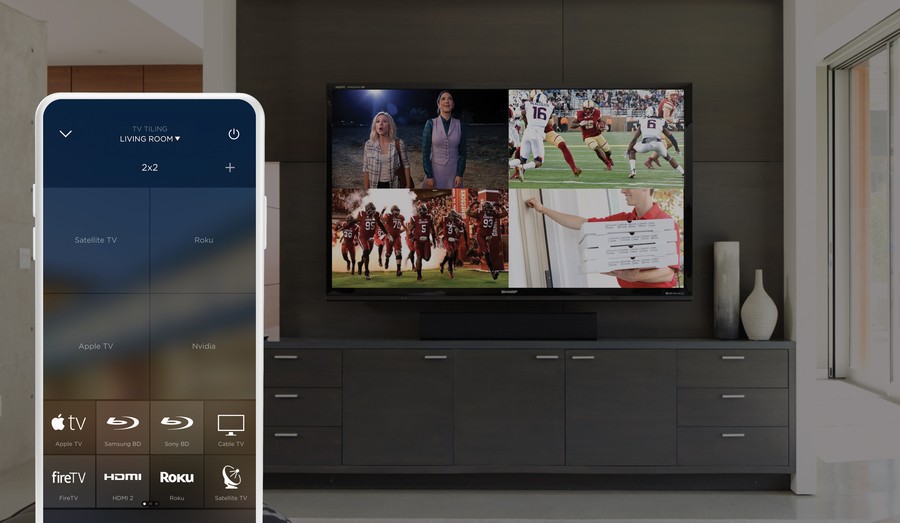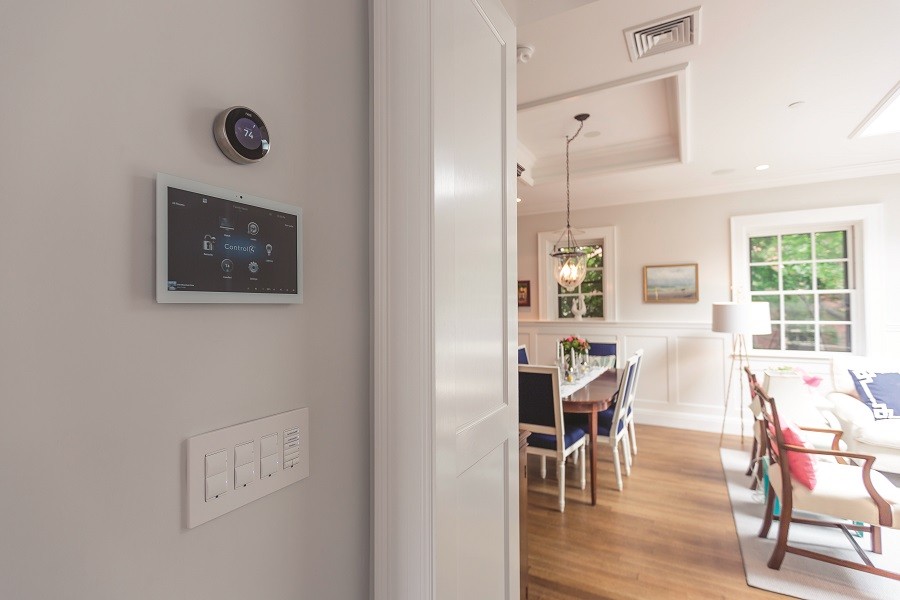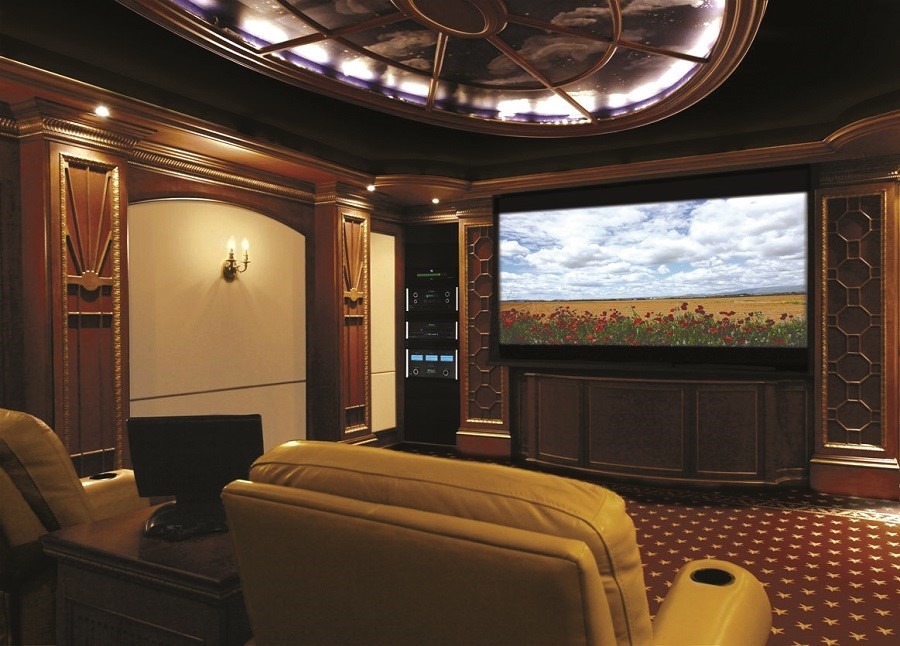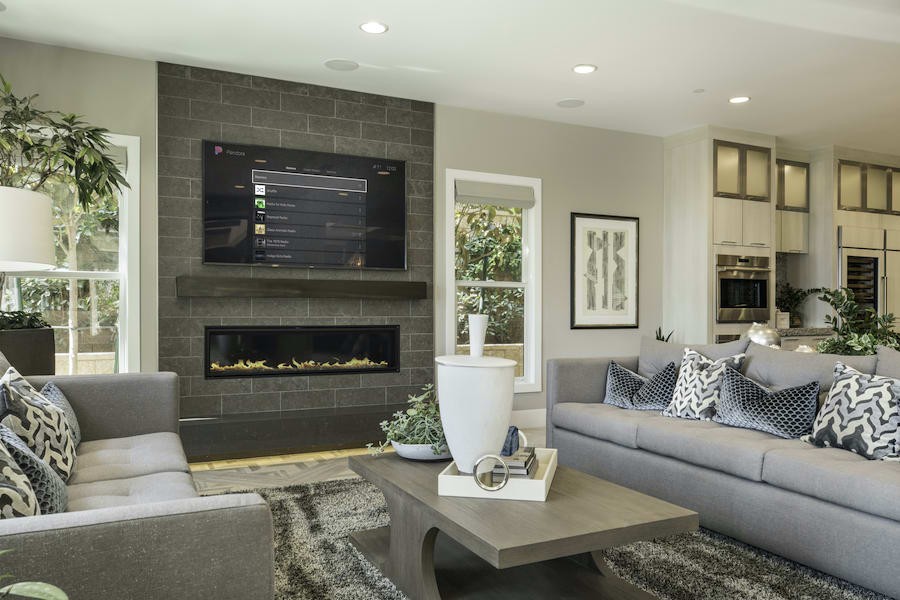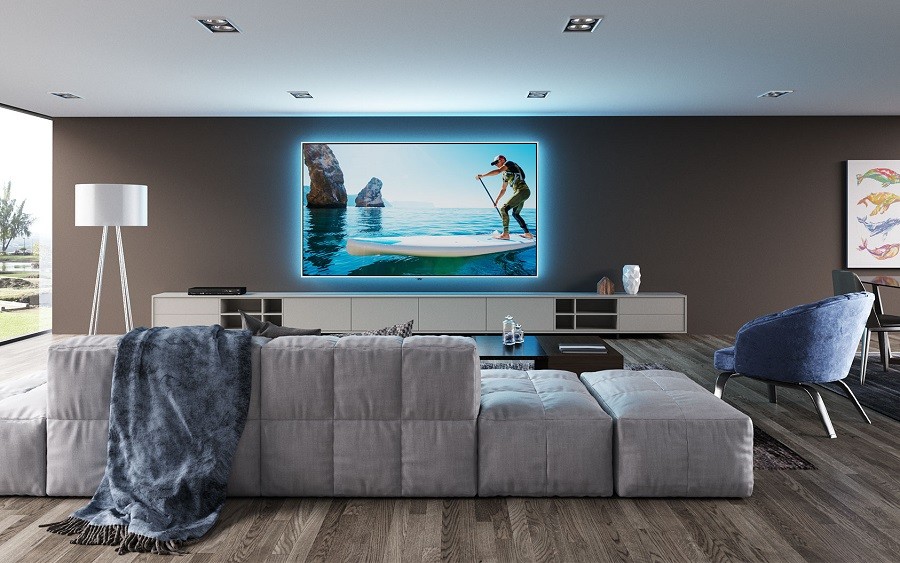To get the traditional movie theater experience in your Kenilworth, Illinois home, you’ll need more than a popcorn machine and great acoustics. The size, shape, and type of theater screen will have a huge impact on movie quality. In this home theater design guide, we’ll teach you what to look for in a home theater screen as well as what factors may impact the installation process.
SEE MORE: 4 Steps to Designing the Ultimate Home Theater System
Size
When it comes to home theater design, bigger does not always equal better. The size and shape of the room, the seating arrangements, and the type of projector will all impact the size of your home theater screen. Here are some tips to keep in mind when calculating size:
- Leave room for speakers: You may think you have an 180-inch space to house your home theater screen, but don’t forget about the components that may need to go next to it: speakers. While you can get away with placing speakers behind the screen (we’ll cover that more in the Materials section), you may need to budget for space below or to the sides of the screen, which will require a smaller screen size.
- Accommodate for seating locations: When you go to a conventional theater, the first row of seats isn’t likely your ideal choice. Sitting so close to a large screen strains the neck and eyes, and the image may show up slightly pixelated. For a 120-inch home theater screen, you’ll want a minimum distance of 12 feet between the screen and the first row of seats. If you have more space to work with, you can pursue a larger screen.
- Verify Your Projector’s Capabilities: Is your projector a high enough quality to handle a large screen size? If your projector isn’t powerful enough to cover the size of your screen, your movies will look washed out and dull. If you haven’t chosen a projector yet, your home theater installer will be able to calculate the needed specifications and choose the best projector for the job.
Material
There are many materials available for home theater screens, each designed to optimize viewing quality for different environments. The two biggest factors that will impact what type of material you choose for your screen will be where you place your speakers and whether you want a fixed placement screen or a retractable one.
For home theater designs where the speakers are behind the screen, you’ll want to choose a perforated or woven screen. These screens have pinprick holes that let sound pass through without visually compromising the picture.

